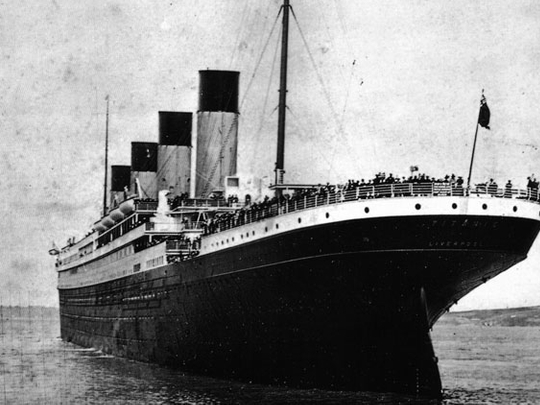
Titanic's fate has been researched for decades and each research project seems to find something new or fascinating from the wrecks or from early pictures. These were the theories that iontrigued us the most.
Was it even the TItanic that sank?
Titanic had two sister ships in the same line: RMS Olympic and HMHS Britannic. The most popular conspiracy theory circulating 100 years since the horrific accident is that it wasn’t really the “Queen of the Ocean” that set out on March 20. Olympic, older sister to Titanic had been in an accident a few months before the time Titanic was to leave for its iconic journey.
The theory is that the owners of the line were put in a financial jeopardy when this happened having no money to conduct extensive repairs, losing revenue from repairs as well as from having to put off Titanic’s maiden voyage. With both ships looking almost similar, Olympic may have been switched with Titanic, repaired and renovated to look like Titanic inside and outside. This would mean that the only people who would know about the switch, would also know that the voyage was doomed.
The main differences pointed out in theories is the difference in number and spacing of the portholes on the two ships and the slight movement of the place where the name 'Titanic' was painted on the ship.
Titanic Belfast, an interactive museum located where the great ship was built.
Doesn’t help debunkers of the theory that Olympic (Titanic?) later was then completely broken up after a long time in war and commercial commission. This left no trace of the ship after 1935, except for some pieces in the White Swan Hotel, Alnwick, England and the Southampton Maritime Museum.
Was there a fire onboard?
It has been reported by multiple sources and documentarians that there definitely was a fire onboard. But was it big enough to have been directly responsible for, or to have contributed to the sinking of the ship? A documentary by Channel 4 went into detailed, never seen before images, to prove that it might have been.
The researcher, journalist Senan Molony, studied photographs of the ship taken before it set out of Belfast and compared it to the wreckage images. The fire in the ship’s hull would have had to be uncontrollable, and was a 1000 degree Celsius, to make the steel brittle enough to have been torn apart when the ship hit the iceberg. Molony found 30-foot long black marks on the hull, right behind where the ship’s lining was pierced by the iceberg.
Experts say that the marks could be from a fire that started in a three-story high fuel store within the ship, specifically in Bunker #6. This fire, if it happened, would have reduced the strength of the steel lining by 75 per cent, meaning Titanic held no chance at any collision, let alone an iceberg – and that there were people who knew this and still let the ship sail.
Why was the ship speeding?
There is no reason why Titanic should have been at the speed that it was going in (22 knots) an iceberg littered area – unless the fire mentioned before happened, or unless iceberg warnings were ignored fastidiously. Titanic was not built for speed, it was built for luxury and comfort. Even if it wasn’t, there’s no explanation for the speed in that area, fraught with danger, with so few lookouts and no warnings.
A group of survivors of the Titanic disaster aboard the Carpathia
If the fire happened – the attempts to control the coal fire could have been why the speed was so high. According to researcher Robert Essenhigh, the most effective containment solution to a coal fire in the bunker involved sailing at full speed to drawdown the coal, until the smoldering coal could be extracted and fed into the boiler.
According to published records, there were warnings to all ships in the area of icebergs, so the most sensible thing for the crew and captain would have to been slowdown, unless the fire was so huge that they had no other way to contain it.
Who knew?
Many first-class passengers on the iconic voyage cancelled their tickets in the very last minute including J.P.Morgan, owner of International Mercantile Marine, parent company of the White Star Line of Titanic.
While some were and do sound like authentic reasons for cancellation like recorded delays or injuries, some theories suggest that the 'who’s the who' planning to be on Titanic knew or came to know that the voyage was doomed, and escaped in time.








